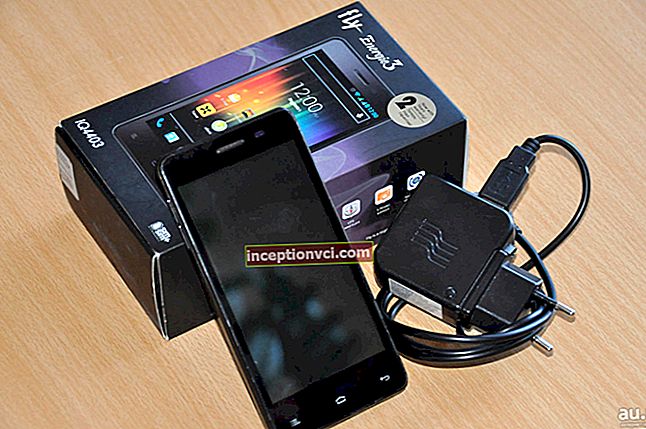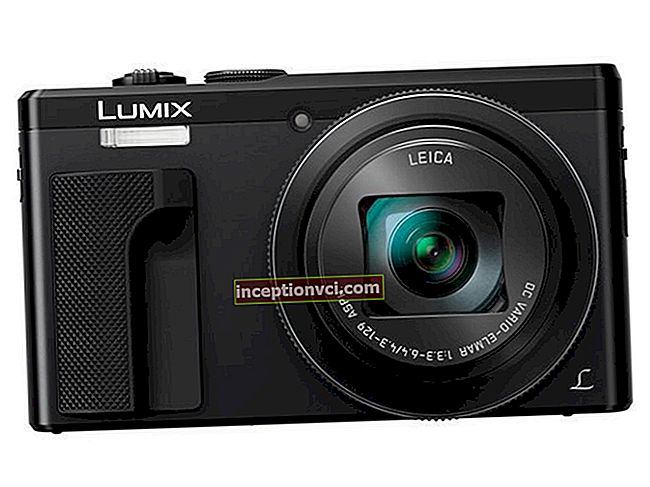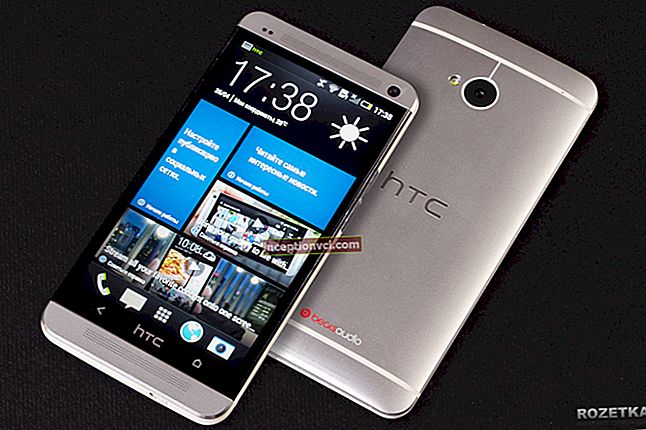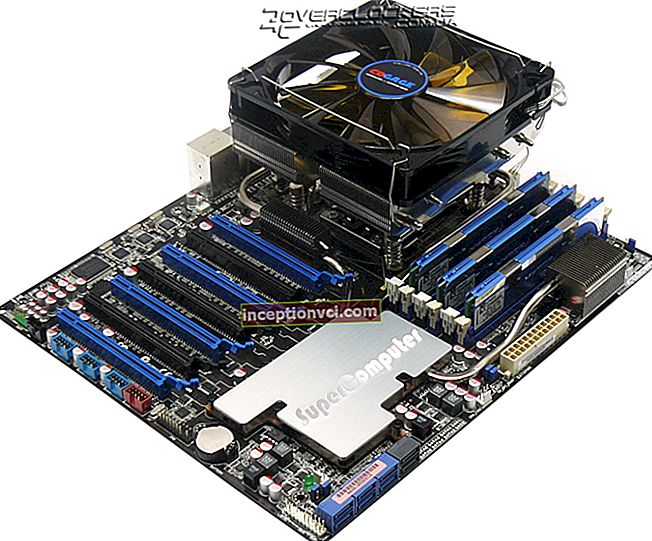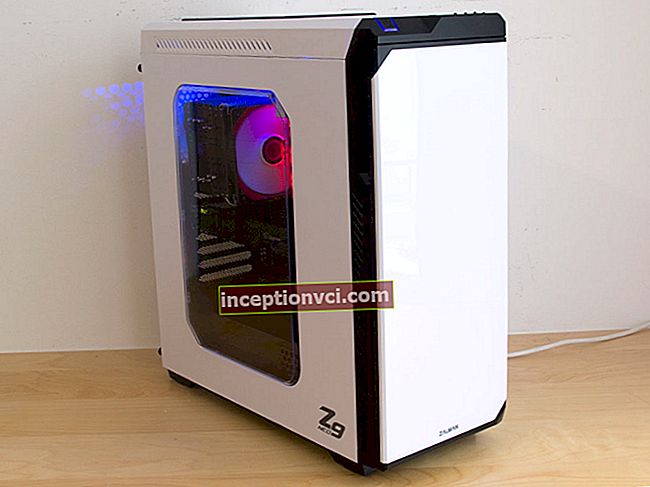
Canon EOS 550D is another update to the Canon EOS XX0D line. The pace of development and competition in the DSLR industry has sharpened in recent years. This class is getting cheaper every year, but at the same time and advanced. And yet, the price tag does not fall below a certain level of about $ 500.
Moreover, it is obvious that the turnovers do not even think about falling. And, taking into account the hybrid cameras pressing from below, we can state that full-fledged DSLR cameras are now infringed as much as never before in the entire history of their existence.
Recall that the EOS XX0D line was born in 2003 with the launch of the Canon EOS 300D SLR camera. At that time, the price of the model was beyond competition: only Canon could offer a camera with an APS-C matrix at a price below $ 1000. The Japanese company foresaw the development of this market, and invested colossal money in the plant for the production of CMOS matrices, later recouping the funds spent with interest. And now, despite being always nearby, the main competitors Nikon and Sony, the company remains the first in this market.
Canon EOS 550D is a product of systematic modernization and, by tradition, has collected the functions of the previous model, which is one step older. In our case, this is the sensational Canon EOS 7D camera. From her, the camera in question received an updated iFCL metering system and (unofficially) an 18-megapixel CMOS matrix with an upgraded microlens architecture. And, despite the denial of Canon representatives, the fact that the EOS 550D uses a matrix from the EOS 7D is obvious. Test shots, identical when shooting in the same conditions, speak volumes about this.

On average, the difference in cost between the EOS 550D and the EOS 7D is about $ 600 - 800. Of course, the reason to buy a Canon EOS 7D has not disappeared. This camera, unlike the camera under review today, it boasts:
• all-metal body frame with powerful protection against dust and moisture,
• the ability to edit HD videos without connecting to a PC,
• faster burst shooting,
• custom keys with more flexible settings,
• more advanced autofocus system,
• display made of tempered glass.
In turn, the EOS 550D bypasses the "seven" display resolution and the number of possible shooting resolutions, including the new crop mode, which will be discussed later. In addition, the camera is significantly lighter, more compact, and may not seem as confusing to beginners.
What's new?
18-megapixel APS-C CMOS sensor. And although many considered an increase in the matrix resolution for "cropped" SLR cameras impossible, it still happened once again. At the same time, despite the critical forecasts, the quality of the images obtained and the detail have improved. In many ways, this can be considered the merit of the company's engineers who developed the so-called "gapless", or gapless architecture of the matrix. The line has come a long way in its history, the result of which has been a threefold increase in the resolution of images, as well as their sensitivity.

Working range of ISO 100-6400 with the expansion of values up to ISO 12800. ISO 1600 can be called a working value without any reservations, which, unfortunately, could not be recognized in Canon models up to EOS 500D. For the first time in non-professional SLR cameras from this company, there was a function of assigning a limitation of the maximum value of light sensitivity to marks from ISO 400 to 3200, which the camera can use automatically. This function has long been the prerogative of Nikon DSLRs.
63-zone iFCL metering (Foсus, Color, Luminance), which is paired with a 9-point AF system. In this camera, the metering system has been significantly improved in comparison with the systems of previous models. A dual layer sensor is now used to calculate the correct exposure. Its first layer is sensitive to reds and greens, while the second is sensitive to blues and greens. This solution excludes confusion of exposure metering in cases where red shades prevail in the frame. This allows you to forget the zone theory of Ansel Adams and resort to adjusting the exposure meter only in extreme cases. What is also an improvement in the parameters is that the exposure compensation has been expanded by more than two and a half times - from ± 2 EV to ± 5 EV.
3-inch LCD screen with a resolution (!) Of 1,040,000 dots (720x480) at 3: 2 aspect ratio. This display resolution is the best not only in the class of budget SLR cameras, but also among all DSLRs in general. And this, you see, is very important for a camera, because on such a display you can evaluate the quality of the picture and determine if it is in focus much faster. Now there is no need to view the enlarged part of the image, as it had to be done on displays with a common resolution of 230,000 pixels. What's more, a 3: 2 display fits the frame perfectly, whereas on the most common 4: 3 displays, you could put a slightly smaller preview of the frame, limited by black bars on the left and right. Plus, the 3: 2 aspect ratio is closer to the 16: 9 aspect ratio typical of HD movies.

Unlike the EOS 7D we mentioned, the display in the Canon EOS 550D is protected by an acrylic coating rather than tempered glass. Also, it does not have a spacer made of optical material, which serves to exclude internal reflections between the coating and the surface of the LCD matrix. As a result, under certain conditions, with a direct hit of light, it will glare. The viewing angle is approximately 160 degrees in all directions. But even with all this, the camera screen is excellent and able to pleasantly surprise even a seasoned photographer. The screen cover is recessed into the body and fits well around the perimeter. The coating can be characterized by an average degree of soiling.
Shooting HD video with the ability to manually adjust aperture and shutter speed. Video can be filmed at different resolutions and at different frame rates: for 1920x1080 at 30, 25 and 24 frames / sec., For 1280x720 at 60 and 50 frames / sec., And for 640x480 also at 60 and 50 frames / sec. This plentiful choice of options makes the 550D quite flexible in the hands of both hobbyists and professionals, and saves you a lot of time on video transcoding.
Unfortunately, you cannot trim videos directly in the camera without connecting to a PC. Perhaps this is due to the insufficient power of the apparatus for this. Unlike the EOS 7D, which has two processors, it has only one DIGIC 4 processor. As noted above, a crop video mode with a resolution of 640x480 has appeared, and this is done as an enlarged display of a part of the frame in the center. Basically, this mode is a digital tele-converter for video shooting. It is convenient in that with the help of standard optics, you can get a good magnification or even macro.
To shoot a video, you must switch to the corresponding mode on the disc. As soon as you switch to it, the mirror automatically rises and the Live View picture starts to be displayed on the screen. Now you can start recording any time you want by pressing the REC button. The same button in other modes is responsible for switching to the live view mode.

During video shooting, you can take pictures, but this entails a short lowering of the mirror, as a result of which the shooting is interrupted for a moment.However, in practice, we will not see a short-term blackening of the display: the camera will glue together two frames of the video sequence taken before and after taking the picture. When viewing, a slight slowdown will be noticeable, followed by a jerk.
Like all previous models in this series, the EOS 550D is equipped with a whole range of different solutions aimed at combating matrix dust. It is known that dust inevitably falls on the matrix when changing lenses, and subsequently appears in the finished images in the form of black dots of varying blur strength. Here, the CMOS sensor is covered with an anti-static layer and is shaken every time the camera is turned on or off. If, despite this measure, the dust eventually lingered on the matrix, you can turn to proprietary technology for help, which allows you to programmatically remove the appeared dots.
Appearance and ergonomics
The camera in question is assembled on the basis of a steel frame using high-quality structural plastic (the inner part of the case, which is connected to the matrix and mirror), as well as high-strength polycarbonate plastic with the use of carbon fiber. The plastic of the case is of high quality and very durable. The same has been used in EOS cameras since the EOS 350D. The strength of the plastic is also indicated by the presence of white marks near the handle, remaining from the nails - he grinds them off no worse than sandpaper.

As usual with budget SLR cameras, you pay for the functionality and quality of the resulting images, but not for the ergonomics. If a very high speed of operation and ease of control of the camera, as well as excellent ergonomics, are critical for you, you should think about choosing a more expensive model. Nevertheless, this advice is addressed mainly to sophisticated users. Compared to ultrazoom and compact cameras, the EOS 550D delivers superior tactile performance and a noticeable shooting experience.
Although the device's small weight and dimensions can be attributed to both pluses and minuses, for the target audience of this camera it is still a clear plus. The assembled camera is excellent, without any backlashes and cracks. The memory card slot and the battery compartment, unlike the more expensive models of the EOS line, are not protected from dust by foam gaskets.

The material of the camera body is matte, there are no fingerprints on it, only the dust is visible to the naked eye. The thumb rest and battery grip are covered in rubber. This time, the linings are a little softer and feel closer to the quality rubber found in Nikon DSLRs.
Comparing the looks of the EOS 550D to the 500D, almost nothing has changed. The button for calling Live View has been moved to another place, and the rest of the buttons, instead of small, glossy and round ones, have become large, more convenient in shape and matte. As a result of the changes, you get used to the camera faster, and now it has become more convenient to use it.

The camera has a typical viewfinder for its class, one might say, at the level of competitors. Light enough, it covers the frame by 95%. Nevertheless, we do not recommend looking through the viewfinders of more advanced cameras - you will inevitably be upset. All relevant shooting information is displayed in the information bar of the viewfinder, and the triggered focus areas are highlighted.
If the exposure is shifted beyond ± 2 EV, an arrow is displayed, pointing in the corresponding direction. And when you go beyond ± 5 EV, the exposure compensation indicator blinks.
The camera supports SD, SDHC memory cards as well as recently released SDXC memory cards. If you plan to actively use the possibility of shooting HD-video, we strongly recommend that you buy memory cards with a size of 4 GB or more, or even better 8 GB: one second recorded in this quality takes about 5-6 MB of video. Thus, a 15-minute video will take about 6 GB.Even when shooting at maximum resolution in RAW, a single shot will usually pull on the order of 25MB.

Another, no less important, characteristic of a memory card purchased for this camera is its speed. It is important to take a card with a speed rating of at least 133x. Otherwise, you will observe various errors in video recording and playback. So, in the case of shooting full-size HD-video with a resolution of 1080p with a slow memory card, the buffer fills up to failure on average in 4-5 seconds, and this will be accompanied by the display of an indicator of its overload.
Recorded videos are limited to 4 GB or 30 minutes, whichever comes first, and are stored in H.264 format. When shooting for a long time, as well as in high temperature environments, the video recording process may stop due to overheating of the sensor. If such a situation occurs, the corresponding indicator will report it. If the space on the memory card runs out, a timer is displayed to signal this and counting down the seconds until the recording stops.

We can safely say that the integration of HD video into DSLR cameras is turning from a clumsy chip "on crutches" into a full-fledged, very competitive opportunity. A considerable number of videos have already been uploaded on YouTube and Vimeo, which in all their glory demonstrate the excellent capabilities of DSLRs in video shooting - shallow depth of field, fairly high detail and the ability to shoot in low light conditions. What else needs to be said after the information that starting with the last episode of the 6th season of the world-famous TV series House M.D. Shooting is done entirely on the Canon EOS 5D Mark II, which the EOS 550D keeps up with in normal lighting conditions and has additional shooting capabilities.

The quality of the videos produced is excellent. You can only notice the presence of noise at extremely high ISO values. They are not striking, and the floating shutter effect, which is clearly manifested in HD-clips from Nikon DSLR cameras, is almost invisible in the EOS 550D. When shooting video at a high frame rate, it is practically indistinguishable at all.
You can apply preset Picture Style effects to your footage, adjusting the contrast, sharpness, brightness, and color tone to your liking. The same operations can be applied to still images.

The Canon EOS 550D has a built-in flash with a guide number of 13 (as with previous generations of cameras). In addition to its direct purpose, it can work as a stroboscope, as well as for focusing in low light. There is also a mode of a conventional backlight lamp, the power of which, however, is not enough at long distances. And yet, in the case of shooting night portraits, such an opportunity saves the portrait subjects from the dubious pleasure of being previously blinded by a strobe.
The flash fires up on its own in automatic modes, but you can slide it back in by half-pressing the shutter button. In Creative and Manual modes, you can trigger the flash by holding down the dedicated button on the left side of the camera.
External flash units can be connected via a hot shoe. And the settings for external flashes can be controlled directly from the camera menu.

The camera mount allows you to mount both EF-S and EF lenses. In the case of EF lenses, in order to determine the effective focal length or their range, it is necessary to multiply the focal lengths indicated on the lens by 1.6, this is the crop factor of Canon APS-C sensors. For example, a Canon EF 70-200 f / 2.8L USM lens on the 550D will deliver an effective focal length range of 112-320mm. Such a feature of cameras with a crop under EF optics is often useful for amateurs of photo hunting due to their longer focal lengths.
When you bring the camera closer to your face, the display turns off automatically. This is possible thanks to an IR sensor and a heat-sensitive receiver.By the way, most mobile cameras "see" in the infrared range, and therefore if you are interested in looking at the camera sensors through the photomodule of your mobile phone, you will see a characteristic glow invisible to the naked eye.

The autofocus system is, unfortunately, inherited from the EOS 500D. It is, of course, quite fast and tenacious, but nevertheless, the 19-point autofocus system would be nice to "migrate" from the EOS 7D to the younger models. Of course, in practice, this is not yet possible, since even with the autofocus system available in the EOS 550D, it is the best solution in its class.
But back to the technical issues. Focus confirmation happens in a split second, even in almost darkness. Focus is instant in daylight. It was pleasant to note that during the test, the camera determined the focus in most cases, and the lens did not fuss, and confidently grasped the selected object.
In addition to single-frame focusing, the camera has tracking (AI SERVO) and intelligent (AI FOCUS) focusing modes. And due to predictive algorithms, the device easily copes with shooting objects in motion.
Menu
The EOS 550D menu, in the best traditions of Canon DSLRs, is divided into tabs in such a way that there are no hidden items: each tab contains exactly as many settings as can fit on the display. Fortunately, there are more of them on the widescreen display.



For greater ease of use, you are free to customize the quick menu to your liking, transferring the most important and frequently changed parameters to it. For example, you can add on / off auto brightness correction, light shades priority and noise suppression modes, access to which every time causes inconvenience by the need to open the menu of all custom functions.
With the finished shot, the camera provides the user with some possibilities. You can view the detailed image information such as histogram, survey data, and lost detail in highlights. You can also view the picture at up to 15x magnification.



Of course, unlike the Nikon DSLR class, the post-processing capabilities of the EOS 550D can be called quite meager. In addition, no more than 9 frames can be displayed on the screen, which somehow resonates with the excellent display resolution and somewhat restricts the user. Although, in our opinion, this is not critical.
Test shots
Thanks to the new IFCL metering system, the camera rarely makes mistakes in white balance and exposure settings. The resolution of the pictures and, accordingly, their detail are worthy of generous praise.

ISO 100

ISO 1600

ISO 12800





Pros:
• best-in-class widescreen display;
• maximum resolution in the middle class and decent detail;
• good image quality at high ISO values;
• speed in work;
• commendable work of the built-in flash;
• possibility of limitation for automatic ISO values;
• fast focusing, even in Live View (by contrast);
• Best-in-class HD video shooting performance;
• photo shooting frequency 3.7 frames / sec.
Minuses:
• mono sound in videos;
• inaccurate white balance in artificial lighting conditions;
• short-term extinction of the display;
• less battery life (in comparison with the EOS 500D);
• small buffer for shooting bursts and RAW.
Conclusion
As you can see from the review, the Canon EOS 550D proved to be a very decent and powerful camera in its segment and almost without weak points. Without a twinge of conscience, we can safely recommend this EOS model to all suffering amateur photographers. After all, even equipped with the Canon EF-S 18-55 f / 3.5-5.6 kit lens, the camera allows you to take wonderful-quality pictures, such as could not have been dreamed of 2-3 years ago, especially at high ISO values and in low light.



